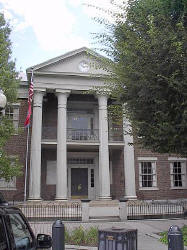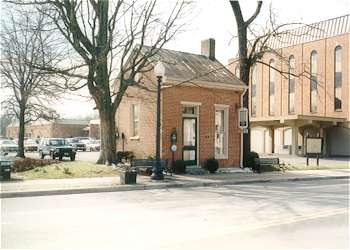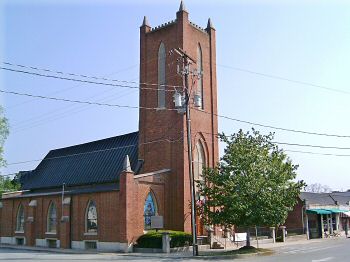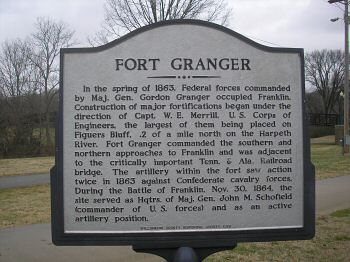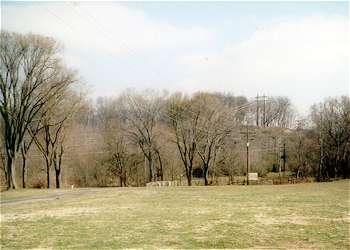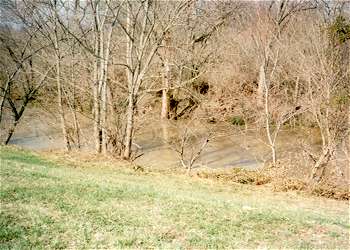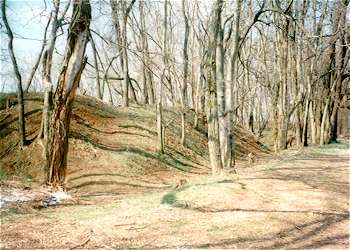|
(August 2002)
Enlarge
Williamson County Court House (1859),
Franklin, TN
The current Williamson County Courthouse is of the antebellum Greek
Revival style and was built in 1856-58 and is the third Courthouse to
serve Williamson County
Williamson County was severely affected by the war. Three battles were
fought within the county: the Battle of Brentwood, the Battle of
Thompson's Station, and the Battle of Franklin, which had some of the
highest fatalities of the war
The county is named after Hugh Williamson (1735-1819), North
Carolina's representative at the Constitutional Convention
 Link:
History of The Williamson County Courthouse Link:
History of The Williamson County Courthouse
Brian Risher photo |
|
|
(March
1995)
Dr. McPhail's Office, Franklin
Served as Maj. Gen. John M. Schofield's command headquarters prior to the
Battle of Franklin
Webmaster photo |
|
(2007)
Enlarge
St.
Paul's Episcopal Church, Franklin
So badly damaged through use as a Civil War barracks and hospital that it
had to be remodeled in 1870. Oldest Episcopal Church and congregation in
Tennessee
Chris Shelton photo |
|
(2007)
Enlarge
St.
Paul's Episcopal Church
Interpretive Marker: St. Paul's Episcopal Church
Chris Shelton photo |
|
(March 2008)
Pinkerton Park, Franklin
 More
Fort Granger
2 More
Fort Granger
2
Fort Granger Interpretive Marker
at Franklin's Pinkerton
Park. The footbridge in the background crosses the Harpeth River. The park
parallels the east bank of the river

Fort Granger December 2008 Courtesy
of Andrew Turnier |
|
(March 1995)
Pinkerton Park
Fort Granger Hill (Figuers
Bluff) in the background View looking
north from Pinkerton Park, near
the marker in the previous photo
Webmaster photo |
|
(3-95)
Harpeth River below Fort Granger
Webmaster photo |
|
(3-95) Fort Granger, exterior ditch
Interpretive
Marker at Pinkerton Park: In the spring of 1863, Federal forces
commanded by Maj. Gen. Gordon Granger occupied Franklin. Construction of
major fortifications began under the direction of Capt. W. E. Merrill,
U.S. Corps of Engineers, the largest of them being placed on Figuers
Bluff, .2 mi. north on the Harpeth River. Fort Granger commanded the
southern and northern approaches to Franklin and was adjacent to the
critically important Tenn. & Ala. Railroad bridge. The artillery
within the fort saw action twice in 1863 against Confederate cavalry
forces. During the Battle of Franklin, Nov. 30, 1864, the site served as
Hqtrs. of Maj. Gen. John M. Schofield commander of U.S. forces and as an
active artillery position
Webmaster photo |
